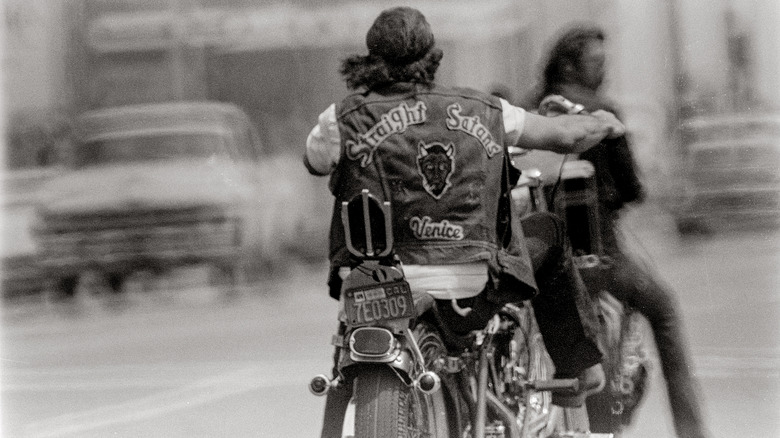
Veterans made up a big portion of the culture at the dawn of biker clubs, so when they returned home and rode their bikes, they would cut the sleeves from their military jackets to make riding more comfortable. In the early years of biker culture, a cut could be either denim or leather but as time went on, bikers started wearing leather exclusively. Leather vests provide a small degree of protection, making them more practical on the open road.
It’s not only members from the big four outlaw MCs that wear cuts, either. Even law-abiding clubs wear them, and there are a series of rules to go along with them. Motorcycle clubs have rules for everything, including who can join the club, how to wear the patches sewn onto a cut, and even what happens if a member loses their cut. Members take pride in their cut, so misplacing it or having it taken is no small event.
Penalties for losing the vest
The cut isn’t just integral to a biker’s wardrobe, it’s sacred. To lose a cut can be a personal tragedy even without additional consequences from the club. There are veterans who have sewed their combat fatigues into the lining of their cut, making them irreplaceable. But there still can be consequences from the club if a member loses their cut, regardless how much internal guilt they’re already enduring.
Naturally, every club is different — bylaws vary, and every president runs their club differently. Not to mention, a club like the biggest motorcycle club in California might have more severe consequences than its aboveboard counterparts. Many 1% clubs — that’s the percentage of MCs the American Motorcycle Association says are composed of criminals — keep their policies close to their chest, but one Reddit user at r/motorcycles, claiming to be part of a 1% club, says any member who loses their cut had better be ready to find it — and also prepare for a visit to the ER.
A 99% club, on the other hand, is more forgiving. The president might restrict a member from riding with the club until they retrieve their vest. Alternatively, they might be allowed to simply purchase a new one as well as the patches, replacing it all. At the same time, whether part of an outlaw motorcycle gang or law-abiding club, bikers are protective of their cuts, so they’re not likely to lose one unless it’s taken by force.
The cut tells other bikers who you are
Whether riding with one of the over 300 outlaw motorcycle gangs or a law-abiding club, members adorn their cuts with patches, otherwise referred to as colors. A biker’s colors tells other bikers which club they belong to. Many of the outlaw gangs wear a diamond patch that reads “1%”.
The more important patches are found on the back of the cut, where there will either be a single, two-piece, or three-piece patch, depending on the club one joins. A single patch will include all the vital information pertaining to the member’s club, including the club’s name, logo, and region. A two-piece will consist of a top rocker that has the club’s name and a bottom rocker showing the club’s logo. A three-piece will include the top rocker, the club logo, and a bottom rocker that displays where the member’s chapter is located. Three-piece sets are typically reserved for full-fledged members of a club, while two-pieces signify somebody in the process of joining the club, commonly referred to as a prospect.
All patches a biker wears are earned from the club. They’re not arbitrary decorations, which is why there’s so much pride surrounding the cut. Think of them as ribbons a servicemember earns in the military.











